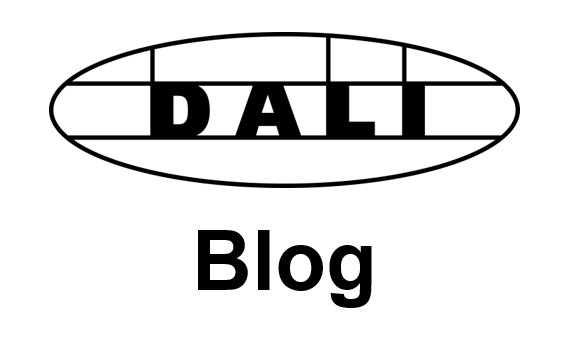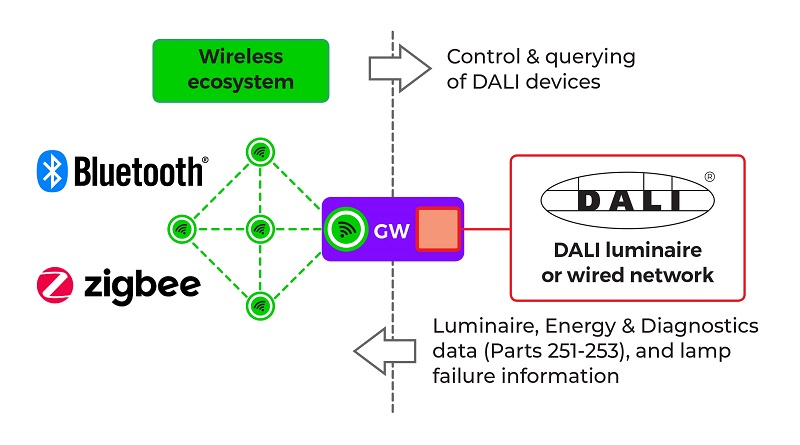




Author: Paul Drosihn, General Manager, DALI Alliance
August 20, 2021
 Lighting is one of those fundamental technologies that’s all around us, and when it works well, we probably don’t even notice that it’s there.
Lighting is one of those fundamental technologies that’s all around us, and when it works well, we probably don’t even notice that it’s there.
Apart from the lights themselves, today’s systems are all about control. But how can lighting specifiers choose control equipment that is reliable, easy to use, straightforward to fit, and will continue to be available in future?
Any system also needs to provide the flexibility to add or move devices, to integrate with different types of sensors, and nowadays to work with Internet of Things (IoT) projects. Of course, everything must talk to everything else – so appropriate international standards must be followed. And cost is always going to be an issue that must be considered.
One popular approach that has found widespread adoption is the standardized Digital Addressable Lighting Interface (DALI®) technology, which is "the largest wired digital open protocol in the world for lighting,” according to Omdia. Over the past three decades, DALI has been used around the globe in applications as demanding as Manchester and Beijing airports, and London’s Crossrail, as well as countless other systems.
So far, DALI has been all about wired networks – but now, the technology is standardizing support for wireless connectivity, as well as for Internet Protocol (IP) based networks. In this article, we’ll explain more about DALI, and how these new wireless and IP-based options will work.
DALI – the standard for digital lighting networks
DALI is managed by the DALI Alliance (also known as the Digital Illumination Interface Alliance or DiiA). The DALI Alliance is an open, global consortium of lighting companies that drives the growth of DALI-based solutions and operates the DALI-2 and D4i certification programs to ensure cross-vendor interoperability, while also authorizing trademark use. The Alliance has more than 290 members worldwide.
DALI is an established protocol for bi-directional digital communication for lighting control devices, based on the open global standard IEC62386, with an extensive set of features dedicated to lighting. Typically, DALI uses a dedicated two-wire bus for communication.
DALI offers precise, repeatable light-output control, and support for sensors such as those for occupancy and light-level detection. It fits well in the IoT world, with DALI devices being individually addressable.
Going wireless
The DALI protocol is designed for wired connection of devices. But in many applications, particularly for IoT, wireless has some benefits – for example, avoiding the cost and inconvenience of running extra cabling, and increasing the flexibility to move lights, controls and sensors to different locations.
The DALI Alliance aims to give specifiers a set of options that includes wired and wireless connectivity, as well as support for IP-based systems. Specifiers may wish to include both in a particular system, which might require a gateway to another non-DALI wireless ecosystem, or a bridge to connect the wired and wireless sides in a DALI-only system.
To meet these objectives, the DALI Alliance has taken two distinct approaches:
In the sections below, these two approaches will be explained with practical examples.
Gateways: linking wired and wireless
Figure 1 shows how a gateway-based system can be implemented, with a DALI application controller connecting to the wired devices. The wired DALI system can consist of multiple DALI-2 subnets, to provide more flexibility and support a higher number of devices.
The gateway architecture enables existing wireless ecosystems to control and query DALI control gear, with wireless devices talking to the gateway using their existing Zigbee or Bluetooth protocol.
The wireless devices can control light output and fading of the DALI devices via the gateway, , and can read lamp failure information from the DALI devices, as well as luminaire, energy and diagnostics data. Security is ensured by the existing features of Bluetooth or Zigbee.

| Figure 1: DALI gateways enable existing wired DALI devices to be used in a non-DALI wireless ecosystem. |
Today, commands will be broadcast to all DALI devices, via the gateway. For future versions of the specification, the DALI Alliance is likely to enable the individual addressing of each device, and it is also considering adding support for other wireless ecosystems as well as Bluetooth and Zigbee.
The DALI Alliance has published two new gateway specifications: Part 341, covering Bluetooth Mesh to DALI gateways, and Part 342, describing Zigbee to DALI gateways.
DALI+ wireless systems
The other new approach is DALI+, which communicates over wireless and IP-based networks. DALI+ still uses the existing DALI language, with DALI commands packaged into ‘frames’. By supporting IP-based technology, DALI+ makes it easy for lighting-control systems to communicate using IT systems and building-automation services.
Initially, DALI+ supports Thread, which is an IP-based, low-power, wireless mesh networking protocol. Security is provided by the authentication and encryption methods that are already part of Thread. In future, the plan is to add support for other carriers, which may include Bluetooth Mesh, Ethernet and Wi-Fi.
All DALI control gear and control devices can be implemented in DALI+, including LED drivers, colour-controllable drivers, emergency drivers, application controllers, push-buttons, and sensors.
What about working with existing wired systems and designs? The DALI commands and features are the same, and the use of a DALI+ bridge allows application controllers in the DALI+ system to control, configure and query devices in a DALI wired system.
DALI+ systems retain the connectivity features of DALI wired systems. For example, they can connect to a building management system (BMS) through a BACnet interface. Also, a backbone such as Ethernet can be used to connect multiple DALI+ systems together.
Additionally, DALI+ application controllers can support multiple subnets, which may be any combination of DALI+ and wired DALI subnets. The application controllers in the DALI+ network communicate via a DALI+ bridge, which enables them to talk to all types of DALI wired control gear and control devices (see Figure 2).

| Figure 2: DALI+ enables devices to communicate using existing DALI commands, carried over a wireless medium. Bridges link wired and wireless networks. |
Conclusions
DALI is a well-established technology that has found many lighting applications around the world. It provides a broad set of features, which make it ideal for use in IoT environments. The open standard technology is backed up by a rigorous process for developing, testing and certifying products, all managed by the DALI Alliance. This includes a centralized, online database of certified and registered products, which is openly available to the industry and the public.
The newly announced DALI+ specification and support for wireless gateways build on the proven capabilities and benefits of DALI, while maintaining the existing focus on certification and interoperability. Test sequences for DALI+ and gateways are now in development, and are expected to be ready in 2022.
With its support for wireless connectivity and IP-based networks, DALI+ opens up new opportunities for lighting control systems – increasing flexibility, and making it simpler to interface with IT and building management systems.
Whether it's simple remote control, or complicated, sensor-rich building-wide lighting networks, the new additions to DALI provide a proven, reliable solution.